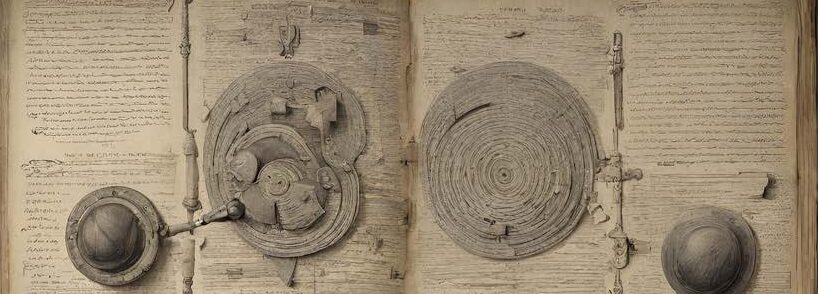The History of Movable Type
Movable type is a printing technology that includes individual letters made of metal that can be arranged to form different words. Movable type originated in China during the 9th century, and it was first made of wooden blocks and clay molds. Bi Sheng, a Chinese inventor, created the first movable type system around 1040 AD. Bi Sheng used clay characters, which were made one by one and then arranged on an iron plate covered with a mixture of resin and wax. The process included arranging the letters, then heating the plate and pressing paper onto it to print the text. During the 15th century, during the European Renaissance, Johannes Gutenberg came up with the invention of the mechanical movable type printing press. Gutenberg’s printing press took the concept of movable type and evolved it by making metal types that could be arranged easily. With that being said, Gutenberg’s invention started the evolution of printing and allowed the mass printing of books and long texts.

Before the creation of movable type and printing press, books were handwritten, which made them expensive and only accessible to a particular class of society. However, movable type made written knowledge accessible to a broader population. It is important to note that printing and movable type had a significant impact on education since they allowed for the international exchange of information and the preservation of historical data. For example, movable type and printing press allowed the knowledge behind science to be accurately delivered across nations. Movable type takes credit for the foundation of most of the knowledge that is easily accessible to us now because it helped preserve it and ensure that it is remains accurate throughout the years.
Personal Experience
My personal experience with movable type goes back to a project I was part of for my ENG19402 course. I was assigned with a group to work on creating an artifact while using movable type to print our sentences. Working with movable type gave me an appreciation for it and inspired me to learn more about it through research. Throughout researching and discussing movable type with my friends who work in graphic design and have strong knowledge of the history of printing, I realized that movable type has profoundly impacted our lives. Movable type set the foundation for all printing technologies, and it was the main reason why literacy grew across history. Additionally, it is interesting to note that the principles behind movable type somehow still exist in our current days since it is similar to the process of choosing digital characters and rearranging them to create a word.

Overall, I can not imagine how our life would have looked like if it was not for the creation of movable type. Due to the technological advancement of printing, it tends to be easy to forget how much hard work had to go into the process of creating such an incredible technology. Therefore, it is essential to look into the history of the technologies that are easily accessible to us in our daily lives because they provide us with a different perspective of things and appreciation for things we may take for granted. As someone who was never interested in looking into history and reading about it, looking into the history of printing helped me develop a new passion for history learning. I believe that being knowledgeable of the history of the text technologies around us directly impacts our perspective of them and enhances our intellectual conversations.
References
A&E Television Networks. (n.d.). Printing press. History.com. https://www.history.com/topics/inventions/printing-press
Bellis, M. (2020). Biography of Johannes Gutenberg, German inventor of the printing press. ThoughtCo. https://www.thoughtco.com/johannes-gutenberg-and-the-printing-press-1991865
Hoh, A. (2021). The history of printing in Asia according to Library of Congress Asian Collections – Part 1: 4 corners of the world. The Library of Congress. https://blogs.loc.gov/international-collections/2021/06/the-history-of-printing-in-asia-according-to-library-of-congress-asian-collections-part-1/
Roos, D. (2019). 7 ways the printing press changed the world. History.com. https://www.history.com/news/printing-press-renaissance
